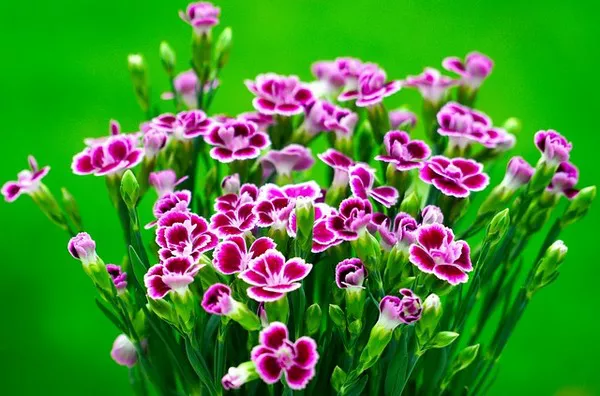Your front yard is the first thing visitors and passersby see, and it sets the tone for your entire home. One of the most effective and visually pleasing ways to enhance your front yard is by planting flowers. Whether you’re a seasoned gardener or a novice with a green thumb, this guide will help you create an inviting and vibrant front yard that will be the envy of your neighborhood.
Planning Your Front Yard Flower Garden
Before you get your hands dirty, you’ll need to do some planning. Consider the following aspects when designing your front yard flower garden:
a. Climate and Zone: Determine your USDA hardiness zone to select flowers that thrive in your local climate. This will ensure that your garden remains vibrant year-round.
b. Sunlight: Observe how much sunlight your front yard receives throughout the day. This will help you select the right flowers since different plants require varying levels of sunlight.
c. Soil Quality: Test your soil’s pH level and composition. This will help you choose the right plants and amendments to optimize growth.
d. Color Scheme: Decide on a color palette that complements your home’s exterior. A cohesive color scheme will create an aesthetically pleasing look.
e. Maintenance Level: Consider how much time you’re willing to invest in maintaining your garden. Some flowers are low-maintenance, while others require more care.
Choosing the Right Flowers
Selecting the right flowers is crucial to the success of your front yard garden. Here are some popular options to consider:
a. Perennials: Perennials come back year after year and provide a stable structure for your garden. Some popular choices include peonies, daylilies, and hostas.
b. Annuals: Annuals bloom for one season but provide a burst of vibrant color. Marigolds, petunias, and zinnias are common annual choices.
c. Bulbs: Bulb plants like tulips, daffodils, and crocuses provide a dazzling display in spring.
d. Native Plants: Native plants are well-suited to your local environment and require less maintenance. They also support local wildlife.
e. Groundcovers: Groundcover plants like creeping thyme and ajuga are excellent for filling in empty spaces and reducing weeds.
Designing Your Front Yard Flower Garden
Once you’ve chosen your flowers, it’s time to design your garden. Here are some design tips to create a stunning front yard:
a. Layering: Arrange your flowers in layers, with taller plants at the back and shorter ones at the front. This creates depth and visual interest.
b. Focal Points: Incorporate focal points such as a decorative pot, garden statue, or birdbath to draw attention to specific areas of your garden.
c. Edging: Define the borders of your flower bed with stones, bricks, or decorative edging to give your garden a polished look.
d. Balance: Aim for a balanced composition by planting an even number of flowers on both sides of your entrance or focal point.
e. Pathways: Consider adding pathways or stepping stones to provide access to your garden while preventing trampling of delicate plants.
Soil Preparation and Planting
Before planting, it’s essential to prepare your soil to provide the best environment for your flowers. Here’s how to do it:
a. Clear the Area: Remove any grass, weeds, or debris from the planting area.
b. Soil Amendments: Add organic matter such as compost or well-rotted manure to improve soil fertility and drainage.
c. Planting Holes: Dig holes for your flowers, making sure they are deep and wide enough to accommodate the root ball.
d. Plant Carefully: Gently remove the flowers from their containers and place them in the prepared holes. Be sure to space them according to their recommended distance.
e. Watering: After planting, water your flowers thoroughly to help them establish roots.
Mulching and Maintenance
To ensure your front yard flower garden thrives, consider mulching and regular maintenance:
a. Mulch: Apply a layer of mulch around your flowers to retain moisture, prevent weeds, and maintain a consistent soil temperature.
b. Watering: Regularly water your flowers based on their specific needs. It’s essential to keep the soil consistently moist but not waterlogged.
c. Fertilizing: Apply a balanced, slow-release fertilizer in the spring to provide essential nutrients to your flowers.
d. Pruning: Deadhead spent blooms to encourage new growth, and trim back any dead or damaged foliage as needed.
e. Weeding: Keep an eye out for weeds and remove them promptly to prevent competition for resources.
Seasonal Care
Your front yard flower garden will go through various phases throughout the year. Here’s how to care for it during different seasons:
a. Spring: Spring is the time for bulbs and perennials to shine. Prune dead branches, divide perennials, and prepare for the growing season.
b. Summer: Ensure your garden receives enough water during the hot summer months. Deadhead and trim as needed to maintain a tidy appearance.
c. Fall: Continue to water and monitor for pests. Plant fall-blooming bulbs and consider adding mums or other late-season flowers for color.
d. Winter: Mulch your plants and protect them from frost. Consider adding evergreens or other cold-tolerant plants for winter interest.
Conclusion
Planting flowers in your front yard is a rewarding endeavor that can transform your home’s curb appeal. With proper planning, flower selection, and care, you can create a stunning garden that welcomes visitors and adds beauty to your neighborhood year-round. So, roll up your sleeves and get ready to enjoy the blooming paradise you’ll create in your front yard.


